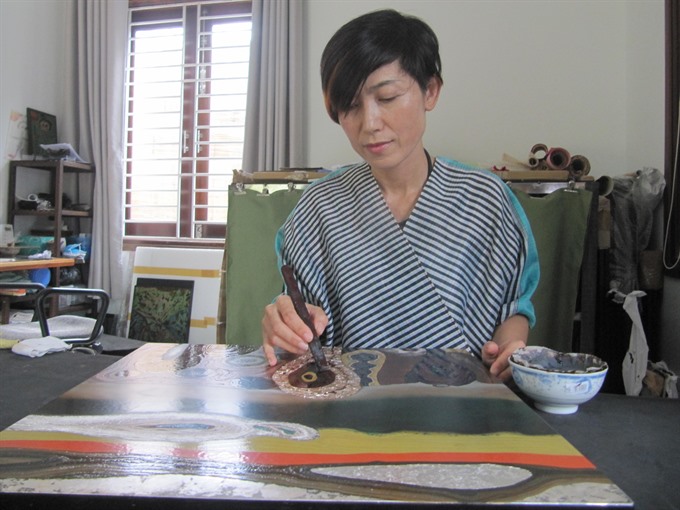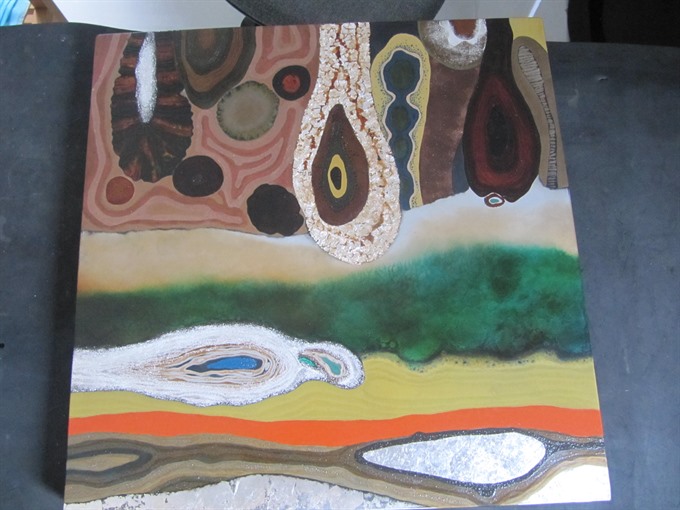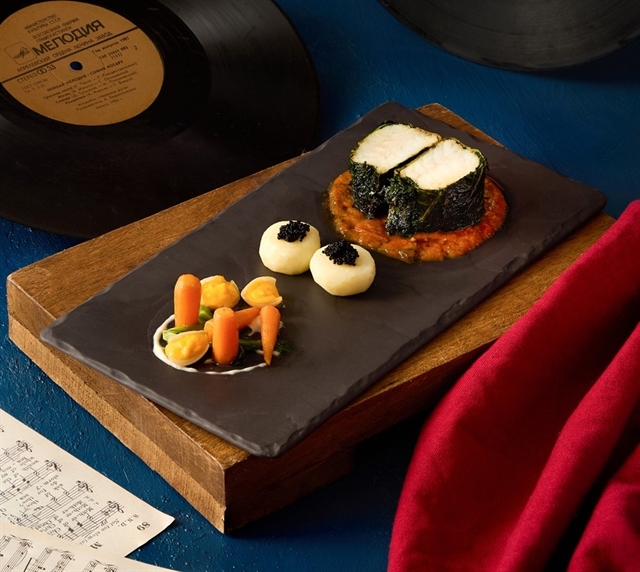 Expat Corner
Expat Corner

Having visited Việt Nam as a tourist, Ando Saeko, a Japanese woman spent one month in HCM City before traveling to Hà Nội for deeper exploring Vietnamese culture and people.
 |
| Ando Saeko creates lacquer painting at her house in Hội An City. Saeko is a rare Japanese woman learning the traditional art of Việt Nam. — VNS Photo Công Thành |
by Hoài Nam
Saeko Ando visited Việt Nam as a tourist in 1995. She spent a month travelling from the south to the north exploring the country.
Although many assume she fell in love with the country at the first sight, it was not the case.
In the late 90s, the country was still very conservative and people were reluctant to communicate with foreigners unless it was for money. They seemed very unfriendly and few smiled back when she smiled at them.
During her stay in Hà Nội, she fell ill.
The lady who ran the small guesthouse on Hàng Bè Street in the old quarter where Saeko was staying realised she was not well. And the lady voluntarily bought some medicine and looked after her for free of charge. But she still did not smile.
This incident made Saeko think that she was only seeing the country and its people on a very superficial level. She decided to stay as long as it would take for her to really understand them so that she could be happy when she leaves the country.
She spent many days sketching and photographing the scenes in the Old Quarter. She found many souvenir shops selling lacquer ware. She was very excited to discover a lacquer culture similar to her homeland, Japan.
She decided to learn Vietnamese lacquer crafts in order to design products using Vietnamese lacquer. But her interest changed when she stared learning with her first master, Trịnh Tuấn, a teacher at the Hà Nội Industrial Fine Arts College. Master Trịnh Tuấn and his wife Công Kim Hoa introduced her to sơn mài, the art of lacquer painting. She became fascinated by the art and was determined to become sơn mài artist.
As master Tuấn became increasingly busy with international exhibitions, Saeko needed to find a new master. She was introduced to Bùi Tuấn Thanh, a lacquer master who had trained many disciples to become successful artists. He told master artisan, Đoàn Chí Trung, one of his best former students, to teach Saeko A to Z of traditional craftsmanship at his workshop in Cầu Giấy District.
It is very difficult to use lacquer as painting material, because it is not like any other painting material such as oil and water colour which dry when the water or alcohol contents evaporate.
“Lacquer doesn’t really dry, but hardens via a chemical process and Vietnamese lacquer needs a higher temperature and humidity to be active. In Japan it would dry too slowly,” she explains, adding that lacquer in Việt Nam is a natural product made from the sap of an a Rhus Succedanea tree.
She gained experience and skills with lacquer with the help of information from both Japan and Việt Nam she acquired through research.
In 2001, she married an English engineer in Hà Nội, and two boys were born in their second home country.
. |
| A lacquer painting of nature of Ando Saeko. — VNS Photo Công Thành |
Saeko and her family then moved to HCM City in 2014 when her husband started to work on a project in the southern city, and she opened her workshop in District 7 to continue her lacquer creations.
As she found the city was too busy and polluted to raise her children, she moved to Hội An City – where she enjoys a tranquil life.
Saeko, who grew up in the rural area of Nagoya, Japan, says, “Still-life, nature and animals are often my favourite theme for my lacquer painting. You must embody yourself of what you want to paint. For example, a painting of a frog, a flower, a tree, you have to imagine and transform into it. That is my strong philosophy that I learned from Zen Buddhism.
"It is not only sơn mài painting as a form of art which captivates me, but Vietnamese natural lacquer itself is what fascinates me and inspires me."
She said the best Rhus Succedanea tree and resin for lacquer in Việt Nam was in Tam Nông Commune of the northern Phú Thọ Province.
“Japanese lacquer could be made into both art works and wares for daily use. We could make products like, chopsticks or bows with lacquer, but it’s not so with Vietnamese lacquer. The resin from Rhus Succedanea is too soft and fragile to make ware to be used in every day life.
However, Vietnamese Rhus Succedanea resin has very high transparency, and it could create bright colour for painting when lacquer is mixed with colour pigments. And as paintings to hung on the wall, the inferiority in hardness does not affect the quality of art works.”
Saeko has been showcasing her works at many of her solo and group exhibitions in Việt Nam and overseas.
Her passion for Vietnamese sơn mài and Vietnamese natural lacquer will only grow and never fade. Just like her love for her second home country, Việt Nam. — VNS




